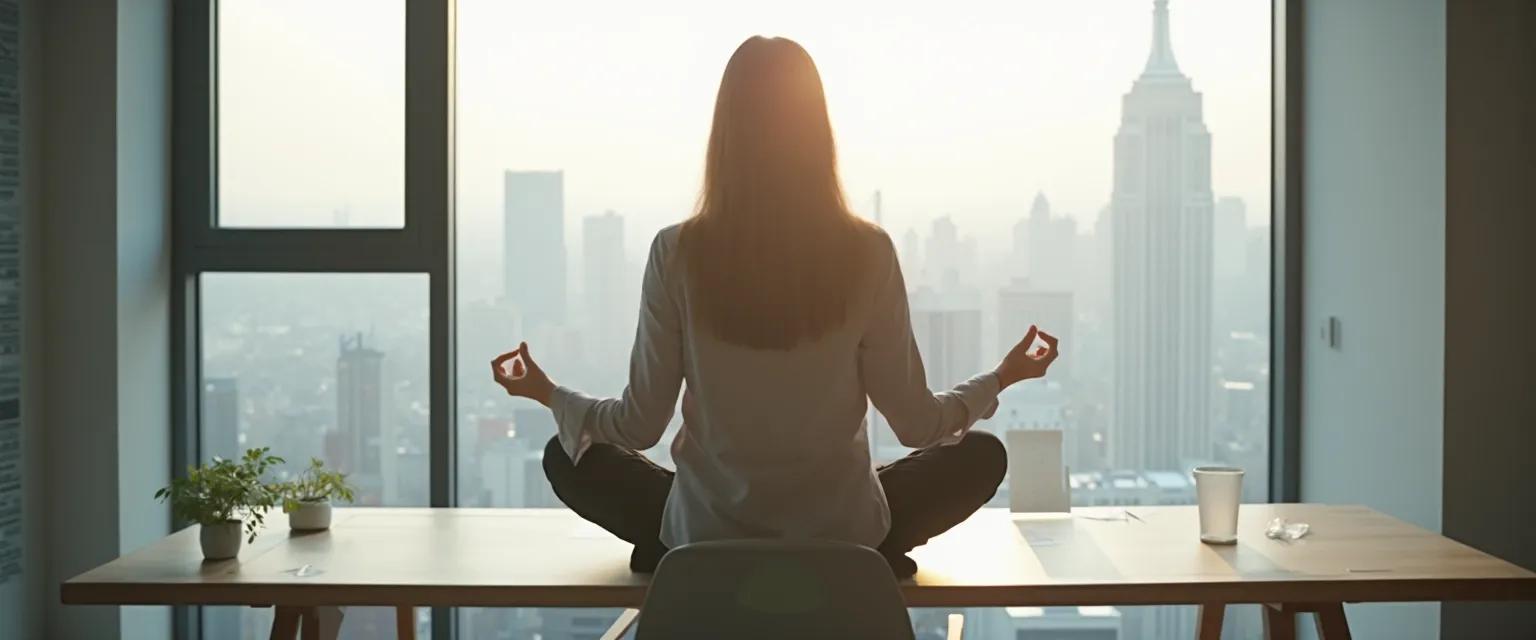3-Minute Meditation for Mental Health: Quick Practices for Busy Professionals
Ever find yourself mentally fried before lunch? You're not alone. The modern workday can feel like a non-stop mental marathon, leaving even the most resilient professionals mentally drained. The good news? Meditation for mental health doesn't require hour-long sessions or a silent retreat in the mountains. Even three-minute bursts can create meaningful shifts in your mental landscape. These micro-meditation moments offer busy professionals a practical way to reset and refocus without disrupting packed schedules.
Research from the University of California found that just a few minutes of meditation for mental health practice can reduce stress hormones and improve focus. These brief mindfulness moments activate your parasympathetic nervous system – your body's built-in relaxation response. The beauty of these practices lies in their accessibility. No special equipment, no membership fees, no awkward poses – just you, your breath, and three minutes of focused attention. Let's explore how these quick mental resets can transform your workday.
Essential 3-Minute Meditation for Mental Health Techniques
The best meditation for mental health practices for busy professionals are those that seamlessly integrate into your existing routine. These techniques require minimal time investment while delivering maximum mental health benefits. Let's explore three powerful approaches that work even in the most hectic environments.
Breathwork Basics
Your breath is the most powerful meditation for mental health tool you already possess. The 4-7-8 breathing technique takes just minutes: inhale for 4 counts, hold for 7, exhale for 8. This pattern signals your nervous system to downshift from fight-or-flight to rest-and-digest mode. Another option is box breathing: equal counts of inhale, hold, exhale, and hold. Both techniques activate your vagus nerve, which helps regulate your stress response and improves anxiety management.
Seated Meditation Postures
You don't need a meditation cushion or special room to practice effective meditation for mental health at work. The "feet grounded" technique involves sitting in your office chair with both feet flat on the floor, spine straight but not rigid. Focus on the sensation of your feet connecting with the ground while taking slow, deliberate breaths. This grounding practice helps interrupt rumination and brings your awareness back to the present moment – perfect for transitioning between meetings or tasks.
Mindful Transitions
The spaces between tasks offer perfect opportunities for meditation for mental health practice. Before opening your next email or joining another video call, try the "three breath reset." Close your eyes, take three complete breaths, and set a clear intention for your next activity. This creates a mental boundary between tasks and prevents the mental residue of previous activities from contaminating your current focus. These transition moments become natural pause points that refresh your mental energy throughout the day.
Maximizing Your Mental Health with Strategic Meditation Moments
The effectiveness of meditation for mental health practices depends largely on when and how you implement them. By strategically placing these three-minute interventions throughout your day, you create a sustainable approach to mental wellbeing that works with – not against – your professional responsibilities.
Identify your personal "tipping points" – those moments in your workday when stress typically peaks. Common triggers include the morning email check, pre-presentation jitters, or the post-lunch energy slump. These moments become your meditation for mental health anchors. By consistently practicing brief meditation during these predictable stress points, you're essentially installing mental circuit breakers that prevent stress from cascading throughout your day.
The science behind effective meditation for mental health techniques shows that consistency trumps duration. Three minutes practiced daily builds stronger neural pathways than thirty minutes practiced occasionally. Start by linking these practices to existing habits – perhaps between your commute and first meeting, or right before lunch. This "habit stacking" approach makes meditation for mental health integration nearly effortless.
Monitor your progress not by how "good" you are at meditating, but by real-world impacts. Notice improvements in your ability to stay focused during challenging conversations, maintain composure under pressure, or transition between tasks without mental friction. These functional improvements are the true measures of successful meditation for mental health practice.
Remember that meditation for mental health is highly personal. Experiment with different techniques to discover which approaches resonate most with your needs and working style. The ideal practice is one that feels supportive rather than burdensome – another task on your to-do list. By embracing these brief but powerful meditation moments, you're giving your mind the regular maintenance it needs to perform at its best, regardless of how packed your schedule might be.




